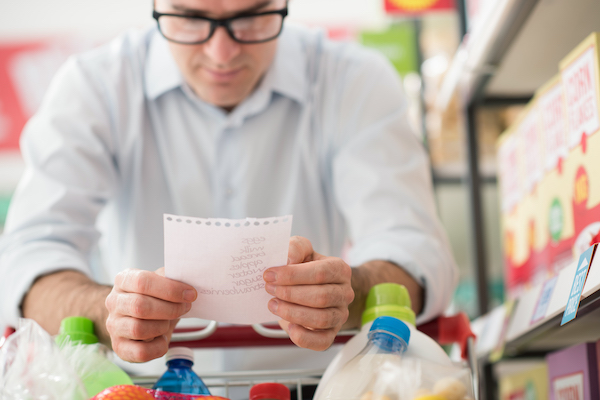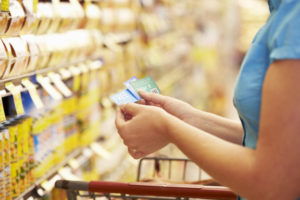Marketing to the 5 Types of Shoppers Using Just One Solution
Retailers typically categorize customers into 5 types: Bargain Hunters, Impulse Buyers, List Lovers, Researchers, and Wanderers. In an effort to tailor the purchasing experience to target each type of buyer, identifying the types of customers and their ever-evolving shopping behaviors has been a consistent priority for retail marketers.
What do these 5 types of shoppers have in common? A need for convenience and customer experience.
Indoor GPS is a trending retail tech solution that offers several different applications to help retailers retain and upsell every type of shopper, improve customer satisfaction, boost revenue and increase loyalty.
At the same time, it is used to increase conversion rates in stores. In fact, Coresight Research recently identified proximity-based marketing as the number-one priority for retailers:
“The number-one in-store technology is proximity or location-based marketing, which is currently a major focus and a transformational store strategy for many retailers.”
Here, we can break down how the different capabilities of Indoor GPS appeal to each of the 5 types of shoppers, while helping them make purchases:
1. The Impulse Buyer
The impulse buyer already loves to shop – making them retailers’ favorite type of customer. They make rash, emotion-based purchase decisions, and are generally easy to sell to.
What’s most important to the impulse shopper is convenience.The impulse shopper loves to hear about new products, or suggestions of complementary items to previous purchases (like boots to go with the new pants you just bought). Using Location-Based Messaging allows you to reach out to them based on their exact location in-store, and notify them of nearby interesting new products – making the purchase hard to resist (similar to Amazon’s convenient “you might also like…” feature).
2. The List Lover
List-loving customers are practical shoppers. They enter the store on a mission, with a set list from which they’ll rarely stray, and a set amount of time to complete their purchases. This makes them the easiest customer to lose when they can’t find products (more about that here).
Indoor GPS enables customers that created a shopping list on your store’s app (much to the delight of list-lovers), to get customized navigation to each item, ensuring they always find what they need (and buy it!). Having an optimized route throughout the store makes for an easier journey and positive experience, while also increasing app downloads and store loyalty.

He’s got a list, and he’s sticking to it.
3. The Researcher
Researching products is not just for your grandpa anymore – millennial customers are known to extensively research products and prices before buying, they’re just using different channels (online) than Gramps.
How can you target these customers who likely know more about your products than even you do? First, Indoor GPS makes the transition from online to offline a breeze, giving researching customers customized guidance to the products they’ve been checking out in your online store.
Secondly, using Indoor GPS allows for better online to offline attribution. When you know a customer has been looking at different models and brands of a particular product on your site, you can help them reach a decision when they come in-store to check it out, by sending them a coupon as they reach the shelf to seal the deal.
4. The Wanderer
Wandering customers enter a store without any idea of what they want, or any specific time frame to complete their shopping. They’re motivated by experience and connection.
Indoor GPS makes things like AR and gamification possible in-store, engaging with and providing the experience wandering customers are looking for (how about guiding them to collect items for a recipe?).
Indoor positioning also enables customers to connect with staff – if they have any questions, they can simply call for assistance via your app, and alert a store employee to arrive at their exact location. This not only enhances in store experience, it also makes maintaining good customer service easier for store associates.

They could use a little help…
5. The Bargain Hunter
Bargain Hunters are coupon and discount-loving shoppers. They get a thrill from purchasing virtually any product at a discounted price, and can be convinced to buy more products if they’ll get a good deal.
Allow bargain hunters to collect loyalty points as they enter predetermined areas of the store, increasing their chances of finding more items to buy, while appealing to their love of loyalty programs, and allowing the retailer to influence the store visit.
As they dwell in front of a shelf, contemplating products, you can push coupons to their smartphones, sponsored by a brand located on that shelf. This sets up your earnings twofold: first from the brand who bought the opportunity to promote, and also from the happy bargain hunter who got a great deal.

She could be getting those straight to her phone instead.
Most shoppers can’t be classified in just one category, all the time. Depending on circumstances, most shoppers can fit into multiple categories (most of the time you’re list-focused, but you saw a cool new pair of sneakers, AND they were on sale).
This makes technology like Indoor GPS indispensable to retailers large and small.
Aside from the enhanced experience for all 5 types of customers, the insights gained from the analytics on shoppers’ journeys gives retailers vital knowledge to better approach customers based on their behaviors in-store, and to better organize product placement to reach every kind of customer.
Oriient provides Indoor Positioning that requires no beacons, no WiFi, and no hardware. Check it out here.
